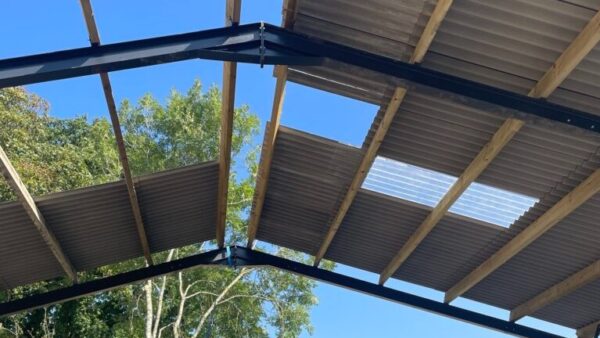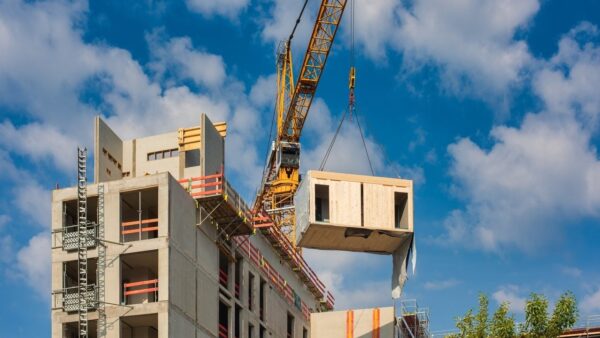
Advocates believe further fire tests can prove the product’s safety credentials.
The government’s 2018 ban on combustible materials in buildings over 18m – which may yet be widened to buildings above 11m – is frustrating for many CLT experts.
It is a lightweight yet strong material, which makes it ideal for higher buildings, and possibly a little over-engineered for low-rise ones.
“Once you get to 6-12 storeys, it’s cheaper, faster and it annoys the neighbours less because there are fewer lorries and deliveries,” says Dave Lomax, senior associate at Waugh Thistleton Architects, which designed Dalston Works, the world’s largest CLT building. Using CLT at Dalston resulted in 25% more homes and 80% fewer deliveries than if it had been built traditionally.
“Structural timber and CLT products have very predictable charring rates. When exposed to fire, the load-bearing core of a beam or truss will remain intact while the char layer remains to protect it.”
Jeremy English, Södra
However, Mike Jacob, co-founder and director at Kiss House, which designs and delivers pre-manufactured homes for the self-build market and small developments, rejected CLT in favour
of laminated veneer lumber (LVL).
“Using CLT for a two-storey house is like using a sledge hammer to crack a walnut,” says Jacob. “You have quite a lot of redundant structure because only part of the CLT panel is required structurally. We are using LVL because it gives slimmer, lighter panels, which are easier to more around. You can use forklifts rather than cranes.”
Kiss is gearing up to deliver its first site just outside Bath and is close to signing a deal with a manufacturer. It is also developing some new offsite systems which Jacob hopes to commercialise and market to the industry.
Patrick Usborne, director at Perpendicular Architects believes that tests will prove that CLT is a safe building material for higher buildings.
“The perception is that timber burns but CLT in a panel just burns the outer skin,” he says. “The evidence clearly shows that it behaves as well as, if not better than, traditional forms of construction.”
Jeremy English, director at structural timber supplier Södra, adds: “Structural timber and CLT products have very predictable charring rates. When exposed to fire, the load-bearing core of a beam or truss will remain intact while the char layer remains to protect it.
The char forms an insulation layer preventing an excessive rise in temperature within the unburnt core. The core continues to function, providing a predictable period of fire resistance.”
The challenge, says Usborne, is that the combustibility issue is “so politicised now”.
There was a meeting of CLT specialists – consultants, architects and suppliers – at the end of January to discuss how they could overturn the ban.
According to Usborne, there was agreement that there needs to be more testing in the UK to prove CLT’s fire performance, which he says has been demonstrated in other countries including the US, Canada, Austria and Finland.
English says: “The Structural Timber Association, among others, is currently augmenting its already extensive fire-resistance testing data. Further investigation will determine how the in-situ fire resistance characteristics of structural timber systems can be best exploited in modern high performance buildings. Once they arrive, I believe that we should then have an informed review of regulations.”










